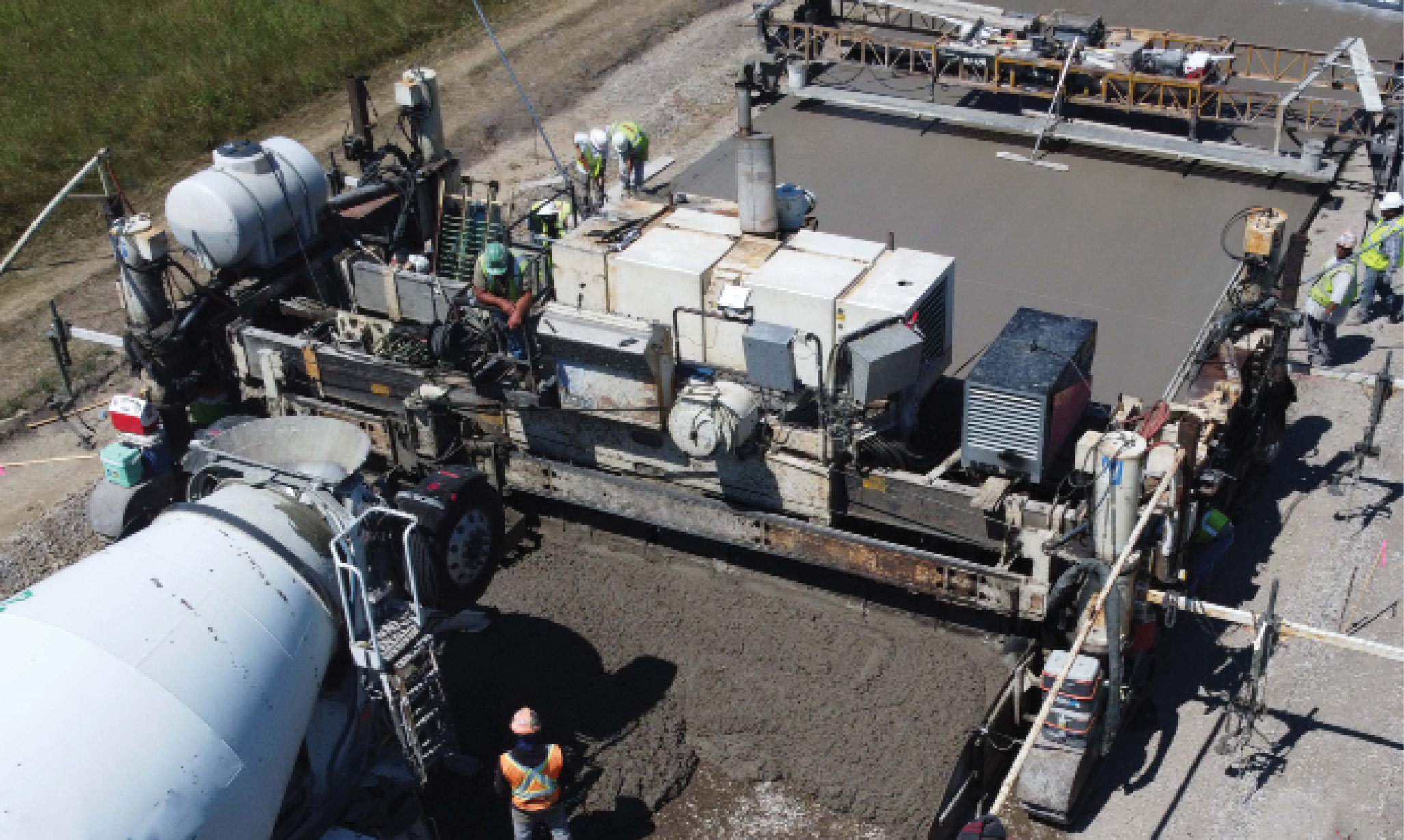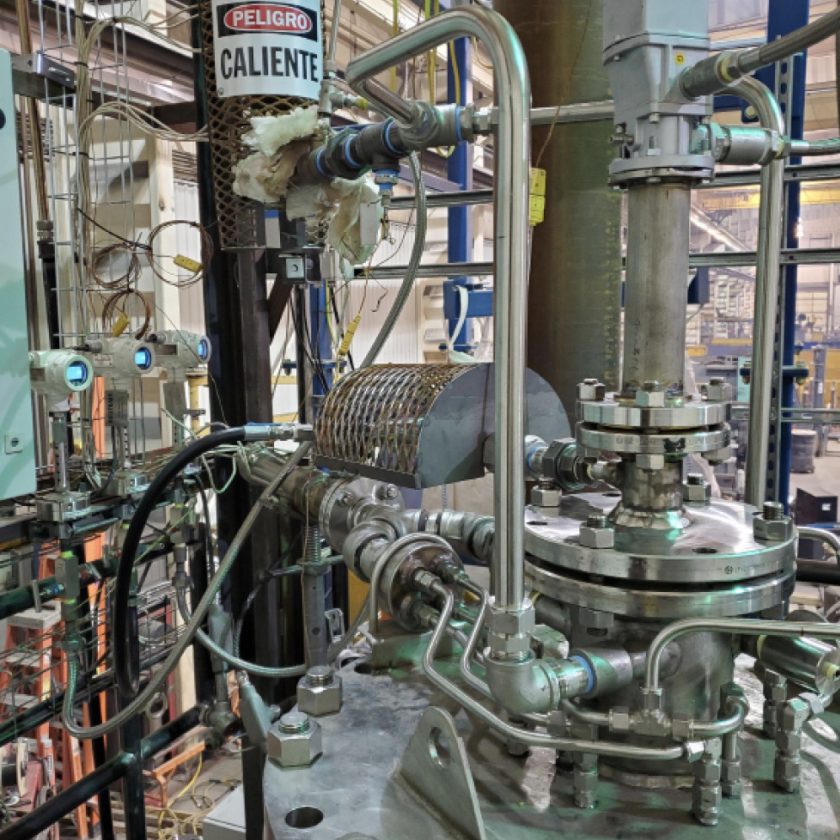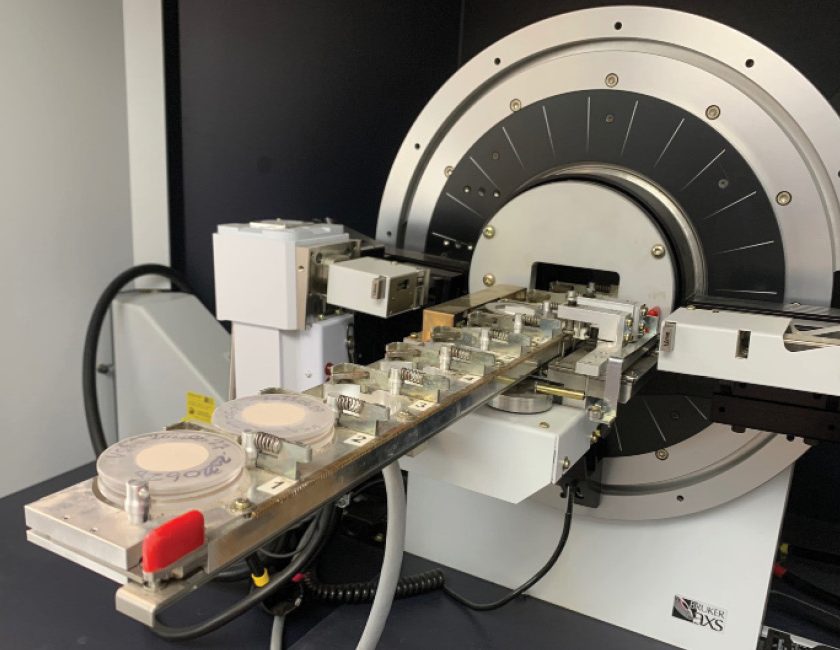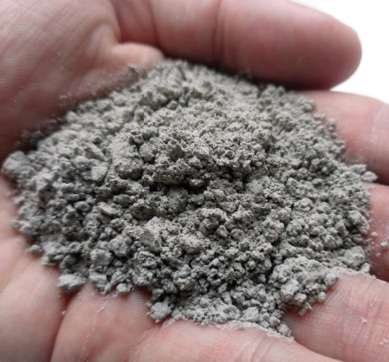Terra CO2 localizes supplementary cementitious material production, harnessing the binding potential of secondary, virgin feedstocks


As the drum beat for low carbon concrete binders grows louder in public and private construction markets, supplementary cementitious material developer Terra CO2 Technology Holdings Inc. has a unique value proposition hinging on two critical achievements—one at the bank, the other in the field.
Under investors and concrete practitioners’ guise, the Golden, Colo. startup closed a Series A funding round in July. It yielded $46 million to support commercial ramp up and further market development of a binder product series led by OPUS SCM, a portland cement and Class F fly ash substitute matching ASTM C 618 Type N requirements. In a July-September low carbon concrete mix design demonstration at the Minnesota Road Research Facility (MnROAD), OPUS SCM performed as projected at high dosages.
The 20 tons of SCM Terra CO2 shipped to Minnesota was derived from silicate-rich raw feeds milled in a pilot reactor and production line at headquarters near Denver. With classified or unclassified alluvial deposits and granite or basalt fines from crushed stone or sand & gravel operations, the company’s grading, melting, cooling and finishing process captures compounds that augment hydrating portland cement binding capacity.
“Our technology is unique in its ability to produce the same consistent material from a growing menu of silicate type feedstocks, the most common rock on the earth’s surface,” says Terra CO2 President and CEO Bill Yearsley, Ph.D., who after a long hiatus in heavy/civil construction returns to aggregate and concrete production well informed by a 1990s tour of duty as (pre-Lafarge) Redland North America chief executive. “Scalable, easily available, and cheap feedstocks are essential for any new product looking to bring more environmentally friendly, cost-competitive solutions to this market. Most of the alternatives to portland cement being tested today are limited by using one specific feedstock that is often not widely available near urban markets or that requires permitting new mines to source. Our solutions not only solve for that scalability bottleneck, but also offer an alternative that is cost-effective.”

“Our melting process is so compelling because it allows us to unlock the reactivity of the most common minerals by making glassy, microspherical SCM that behaves like high quality Class F coal ash,” adds Terra CO2 Founder and Vice President of Research & Development D.J. Lake. “Our focus is always on economics and we’ve overcome important fundamental challenges to make silicate rock vitrification, or melting into glass, viable, cost effective and scalable. With supplementary cementitious materials in hand, we are looking forward to delivering a full replacement of portland cement in a few years’ time.”
Capital from an investor group led by Breakthrough Energy Ventures, the most active source of funding behind climate-driven, cement or concrete industry startups, positions Terra CO2 for the 2023-2024 construction of an SCM operation with annual capacity up to 250,000 tons. A commercial plant will require a five-acre site with drive-over hopper for delivery of feedstock from area aggregate operations; natural gas reactor, with a pathway to a net zero electric or hydrogen fueled model in the future; plus, material handling, classifying, grinding, storage and loadout infrastructure.
Terra CO2 engineering and technical teams aim to replicate at commercial scale the SCM grading and strength activity index consistency achieved thus far with pilot equipment and a wide range of feedstocks. Market-grade material to date has included OPUS SCM milled from both granitic and alluvial feeds, netting finished binders of 80-90 percent silicon dioxide, aluminum oxide and iron oxide content—all to the benefit of finished concrete performance when reacting with other binder chemicals and compounds. In the march to commercialization, Terra CO2 has tested OPUS SCM with Braun Intertec Corp. and WesTest LLC/Atlas, both regarded for their cement and concrete materials acumen.
TWO TIERED CARBON REDUCTION
Terra CO2 has emerged in a watershed year for developers of material processing, equipment and information technologies geared to a) reducing portland cement requirements in ready mixed or manufactured concrete, or b) lowering the carbon dioxide emissions associated with cement clinker and ASTM C 150 powder. More than any startup proposing emissions-countering methods, Terra CO2 addresses carbon metrics at two of the three intervals that cement producers and their customers control: cradle to gate, or cement plant quarry to tanker or rail car loadout; and gate to silo, or cement plant/terminal loadout to concrete batch plant.
At the first interval, OPUS SCM has CO2 emissions and nitrogen oxide (NOx) factors 70 percent and 90 percent below those in portland cement production, measured ton for ton replaced. Renewable energy sources likely to surface within Terra CO2 plants’ reach will help drive more favorable carbon metrics, especially those tied to feedstock grinding and reactor power.
In the gate to silo interval, Terra CO2 envisions additional carbon emissions reduction, coupled with logistics cost savings, attributable to shorter transportation factors than portland cement and fly ash distribution points. With readily available silicate feedstocks, the company could apply its 250,000 ton/year plant template on sites within 20-60 miles of key concrete markets. That delivery range would compare with typical portland cement and fly ash gate to silo travel of 75-150 miles and 200-500 miles, respectively.

STRENGTH COMPARABLES
Terra CO2’s flagship product has exhibited performance characteristics validating portland cement or Class F fly ash substitution at rates of 10-35 percent in lab and field settings. The company is initially promoting OPUS SCM at a 20 percent concrete mix binder factor. Cylinders cast with the material dosed at that level in 5.5-, 6.5- and 7.5-sack mixes have slightly exceeded, nearly matched or mirrored the 28-day compressive strength development of companion Class F fly ash specimens.
The largest OPUS SCM field application Terra CO2 has announced thus far is at MnROAD, a long-term demonstration site underwritten by the Minnesota Department of Transportation, with additional funding from the National Road Research Institute, a consortium of nine state DOTs, plus the Federal Highway Administration. In the Q3 2022 demonstration of 14 admixtures or mix production technologies billed as low carbon alternatives to conventional concrete (≥ 95 percent clinker binder), Terra CO2’s mixture led the portland cement substitution category at a 35 percent rate. Minnesota DOT and Braun Intertec lab testing indicated that OPUS SCM mixes easily met flexural and compressive strength targets.
“The ongoing test at MnROAD focuses on materials that will enable sustainable construction. The project has a performance target rather than a prescribed concrete mixture, allowing the additive suppliers to push the boundaries of cement substitution,” observes Larry Sutter, principal of Michigan-based Sutter Engineering LLC, who manages the project’s concrete testing and pavement performance evaluation. “Terra’s Opus SCM was utilized at the highest substitution level of all the products tested as a supplementary cementitious material in the project.”
“We are excited to partner with Terra CO2 on the MnROAD research to help develop concrete with lower carbon dioxide footprints,” adds Braun Intertec Director of Concrete Consulting Alfred Gardiner. “With the ongoing shortage of fly ash in North America, the possibility of manufacturing a comparably or better performing substitute from aggregate mining products and waste will help the industry deliver sustainable, durable concrete to provide long term infrastructure. The OPUS SCM mixes performed very well throughout qualification testing and the construction phase.”
“There are thousands of miles of road within the public network of the United States alone, all of which require cement to create,” concludes Terra CO2 chief Bill Yearsley. “With cement production as one of the largest contributors to carbon dioxide emissions globally, it’s urgent that we look to low carbon alternative binders. The Minnesota highway demonstration site is an important catalyst for making the switch.”



